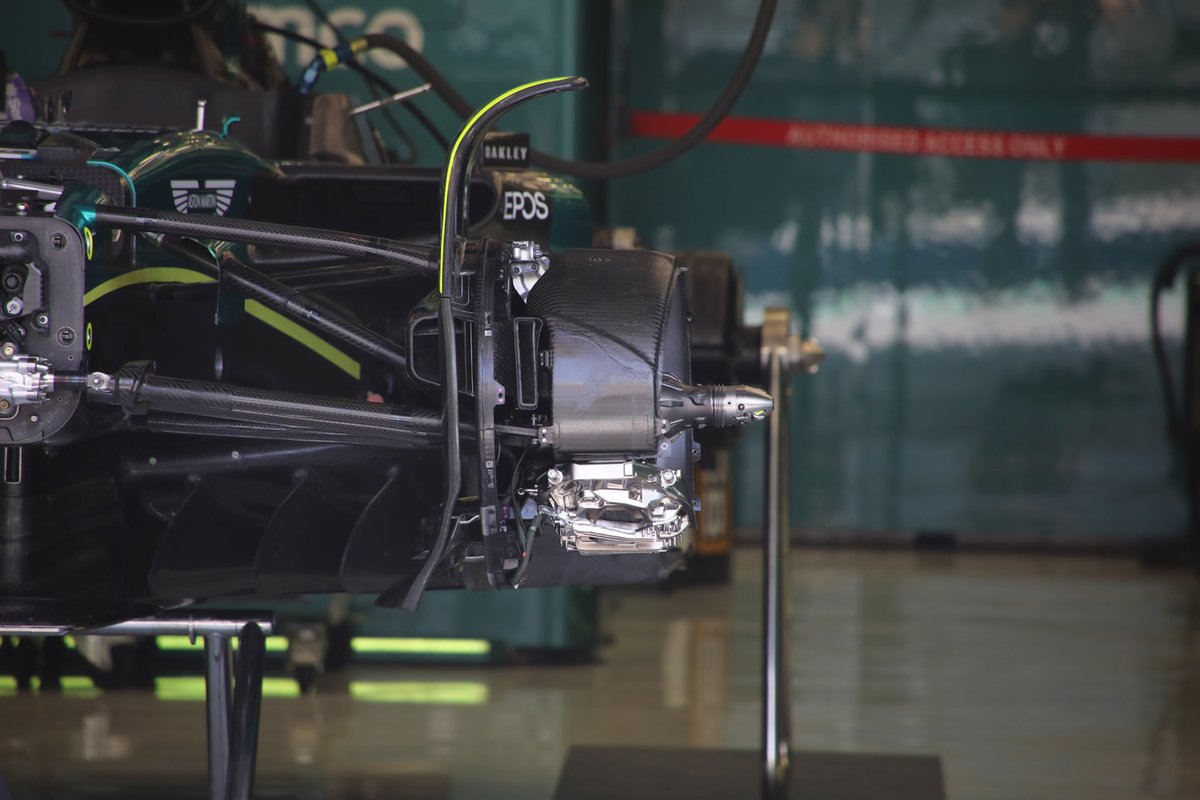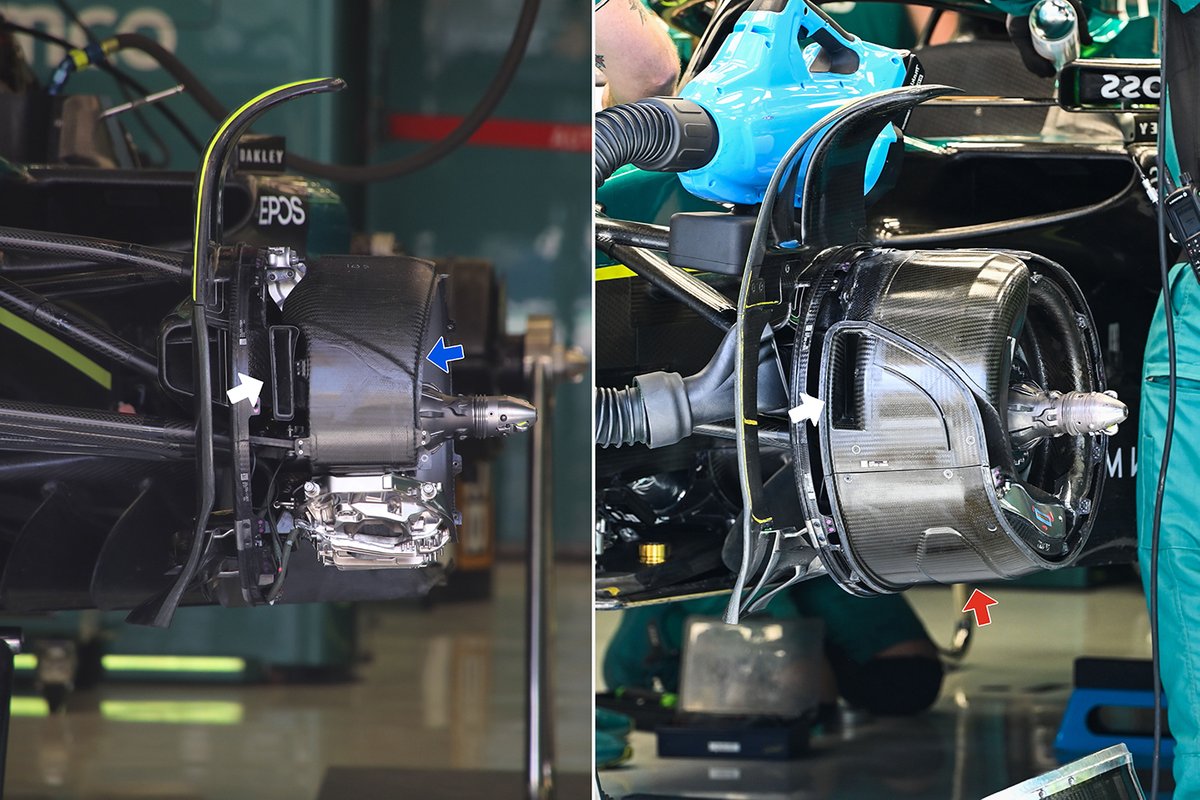Matters were not made easy for him as a shorter DRS zone, and Aston Martin’s relative lack of straightline speed meant there was no chance of easy passing on the straight.
Instead, Alonso pulled off some great overtaking moves, which included a brilliant dive down the inside of Lewis Hamilton at the tricky Turn 10.
These passes were possible because Alonso knows that one of the strengths of his AMR23 car is under braking.
This had become crystal clear when looking at the Q3 qualifying laps of Max Verstappen, Charles Leclerc and Alonso himself.
Looking at telemetry overlays, the Spaniard was better than both his rivals on the brakes into Turns 1 8, 10 and 11, giving an indication as to just how well this aspect of the AMR23 is performing.
Aston Martin has clearly overhauled a lot of its car this year, with it aggressively pursuing the Red Bull-style downwash aero concept.
But there has also been a less obviously appreciable difference in the design language of other design features, including the front brake assembly, and it is this that appears to have played a part in what we saw at the weekend.

The most critical of changes Aston Martin has made to its brakes is in abandoning the three o’clock mounting position it had for its caliper in 2022. Instead, it has moved back to the more familiar six o’clock position.
The caliper itself carries the DNA of its predecessor, with a slot along the centreline, which is then divided by a row of ribs that allow the heat rejected by the disc a passage through the caliper’s body.
A carbon fibre housing is then fixed to the caliper that brings in cool air via the brake duct inlet and is piped out the rearward-facing outlet.
The ducting used to perform this task is obviously very different to 2022, given the caliper’s position. This has helped the team to introduce other airflow and heat-exchanging solutions this season.
The most obvious of these being the inclusion of a disc fairing (blue arrow), which is similar to the ones used by several teams throughout 2022.

Aston Martin AMR23 front brakes (arrowed)
In Aston Martin’s case, the fairing is a little more substantial than some of the solutions seen last year, although there has been a trend amongst the teams that already used them in 2022 to increase the size of theirs too.
The disc fairing is a result of the teams thinking laterally regarding the changes posed by the new regulations.
F1’s wheel rims increasing from 13 inches to 18…
Click Here to Read the Full Original Article at Motorsport.com – Formula 1 – Stories…

